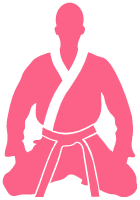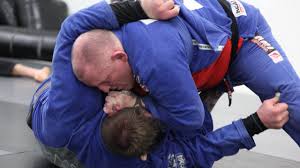Side control is a dominant position in Brazilian Jiu-Jitsu that allows the top player to control and attack the bottom player effectively. It is a versatile position that can be used for both offensive and defensive purposes. However, mastering the concept of side control requires more than just brute force and strength. It involves understanding the underlying principles and concepts that make the position so effective. In this article, we will explore the key concepts of side control that will help you become a better BJJ practitioner.
Maintaining Top Control
The first concept of side control is maintaining top control. Once you have established side control, your goal is to maintain this position for as long as possible. This can be done by using your body weight to apply pressure to your opponent, controlling their hips, and preventing them from escaping. To maintain top control, you need to be aware of your opponent’s movements and anticipate their attempts to escape. By staying one step ahead of your opponent, you can maintain top control and limit their options.
Weight Distribution
The second concept of side control is weight distribution. Proper weight distribution is crucial to maintain control and prevent your opponent from escaping. To achieve this, you need to distribute your weight evenly across your opponent’s body. This means keeping your hips low and driving your shoulder into your opponent’s chest. By maintaining proper weight distribution, you can control your opponent’s movements and limit their ability to escape.
Pressure and Positioning
The third concept of side control is pressure and positioning. Applying pressure to your opponent is crucial to maintain control and set up submissions. This can be done by using your body weight to apply pressure to your opponent’s chest, neck, or face. Additionally, proper positioning is crucial to prevent your opponent from escaping and set up attacks. By controlling your opponent’s head and hips, you can limit their movement and set up submissions.
Transitioning to Other Positions
The fourth concept of side control is transitioning to other positions. While side control is a dominant position, it is not a finishing position. To submit your opponent, you need to transition to other positions such as mount or back control. Transitioning to other positions requires anticipation and awareness of your opponent’s movements. By staying one step ahead of your opponent, you can transition to other positions and set up submissions.
Escaping Side Control
The fifth concept of side control is escaping. As a bottom player, your goal is to escape from side control and regain guard. To escape, you need to create space between you and your opponent and work your way back to guard. This can be done by bridging and shrimping, using frames to create space, and using your opponent’s momentum against them. By understanding the principles of escaping, you can minimize the time you spend in a vulnerable position and get back to a more advantageous position.
Using Side Control as a Base
The final concept of side control is using it as a base. Side control can be used as a base to set up other attacks and transitions. For example, you can use side control to set up a kimura or armbar submission, or you can use it to transition to mount or back control. By using side control as a base, you can take advantage of your opponent’s reactions and set up attacks.
In conclusion, mastering the concept of side control is essential to becoming a well-rounded Brazilian Jiu-Jitsu practitioner. By understanding the key concepts of maintaining top control, weight distribution, pressure and positioning, transitioning to other positions, escaping, and using side control as a base, you can become a more effective player on the mat.
Hey there! Just a heads up that some of the links in this post are affiliate links, which means that if you click on them and make a purchase, I may earn a commission. But don’t worry, it won’t cost you anything extra – in fact, you might even get a sweet deal! Plus, every purchase made through one of these links helps support my blog and keep the content coming. So, if you do decide to make a purchase, thank you so much for your support – it means the world to me!
All the best,
Will








Pingback: bow and arrow choke – Jiu Jitsu Hub
Pingback: The Ultimate Guide to the Ezekiel Choke: Techniques, Variations, and Setups – Jiu Jitsu Hub
Pingback: Sit-Up Escape: The Key to Escaping Your Opponent’s Control and Regaining Dominant Position – Jiu Jitsu Hub